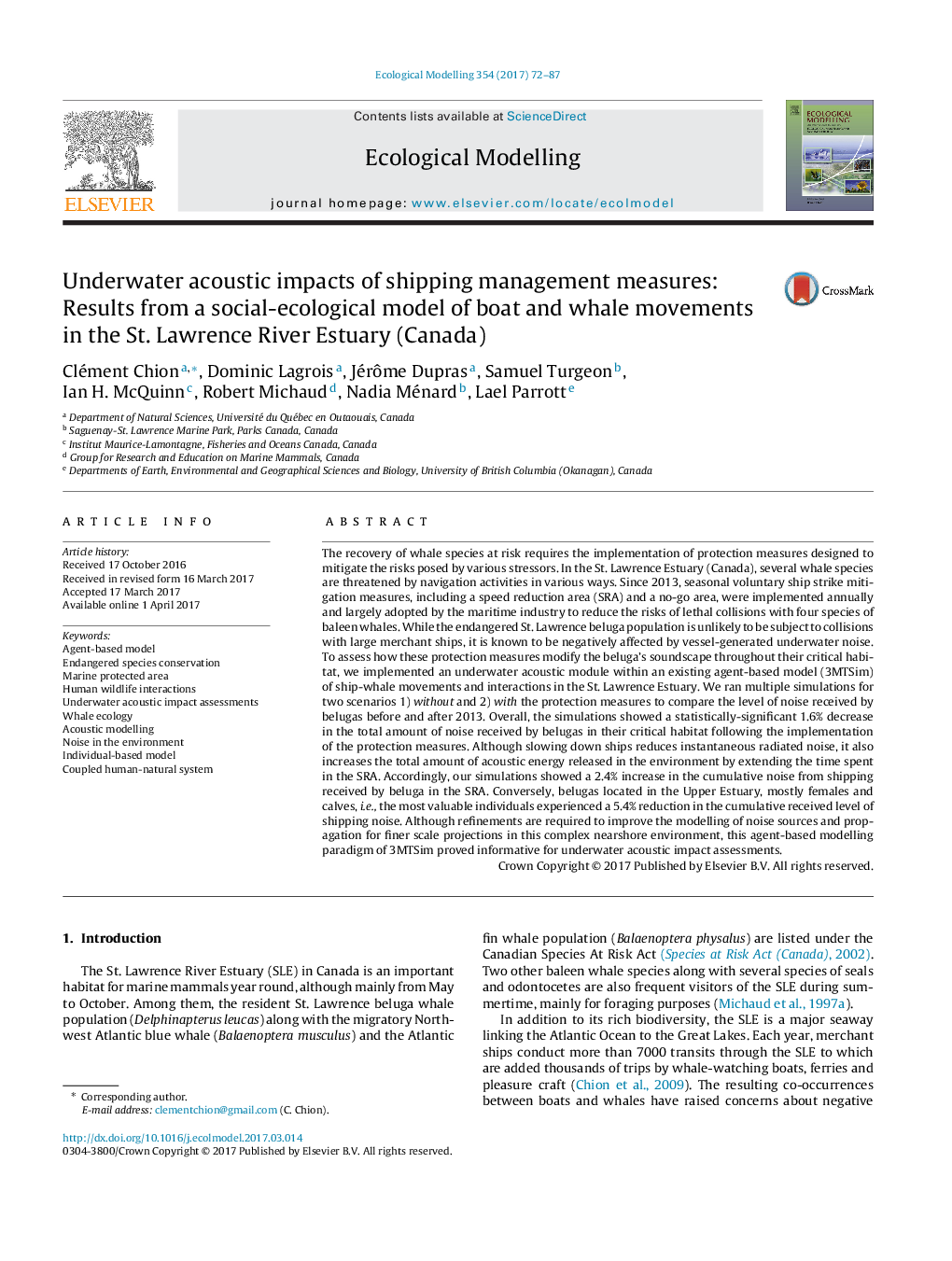| Article ID | Journal | Published Year | Pages | File Type |
|---|---|---|---|---|
| 5742188 | Ecological Modelling | 2017 | 16 Pages |
â¢3MTSim is an agent-based model of boat-whale movements in the St. Lawrence Estuary.â¢We implemented an underwater acoustic module in 3MTSim to simulate ship noise.â¢We assessed belugas' exposure to noise after implementing ship management measures.â¢Ship noise decreased by 1.6% in the critical habitat of belugas with the new measures.â¢A greater noise reduction of 5.4% is observed near beluga calving grounds.
The recovery of whale species at risk requires the implementation of protection measures designed to mitigate the risks posed by various stressors. In the St. Lawrence Estuary (Canada), several whale species are threatened by navigation activities in various ways. Since 2013, seasonal voluntary ship strike mitigation measures, including a speed reduction area (SRA) and a no-go area, were implemented annually and largely adopted by the maritime industry to reduce the risks of lethal collisions with four species of baleen whales. While the endangered St. Lawrence beluga population is unlikely to be subject to collisions with large merchant ships, it is known to be negatively affected by vessel-generated underwater noise. To assess how these protection measures modify the beluga's soundscape throughout their critical habitat, we implemented an underwater acoustic module within an existing agent-based model (3MTSim) of ship-whale movements and interactions in the St. Lawrence Estuary. We ran multiple simulations for two scenarios 1) without and 2) with the protection measures to compare the level of noise received by belugas before and after 2013. Overall, the simulations showed a statistically-significant 1.6% decrease in the total amount of noise received by belugas in their critical habitat following the implementation of the protection measures. Although slowing down ships reduces instantaneous radiated noise, it also increases the total amount of acoustic energy released in the environment by extending the time spent in the SRA. Accordingly, our simulations showed a 2.4% increase in the cumulative noise from shipping received by beluga in the SRA. Conversely, belugas located in the Upper Estuary, mostly females and calves, i.e., the most valuable individuals experienced a 5.4% reduction in the cumulative received level of shipping noise. Although refinements are required to improve the modelling of noise sources and propagation for finer scale projections in this complex nearshore environment, this agent-based modelling paradigm of 3MTSim proved informative for underwater acoustic impact assessments.
